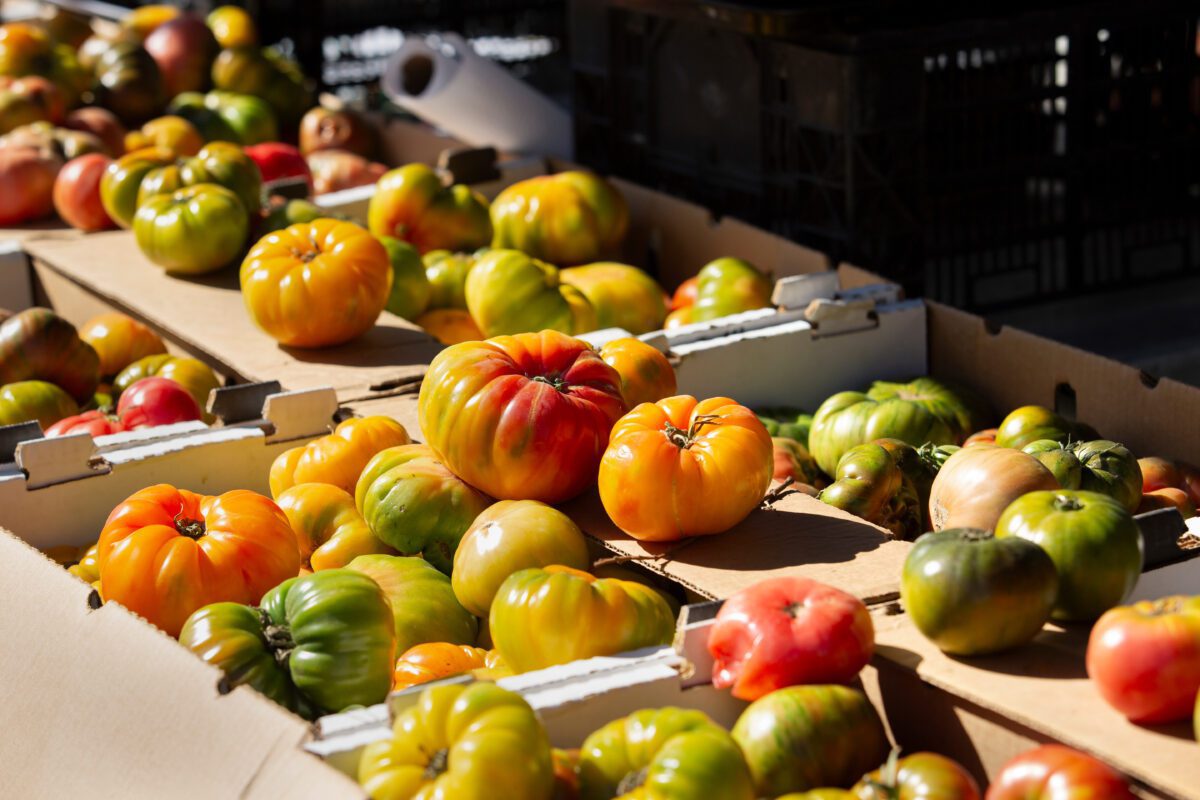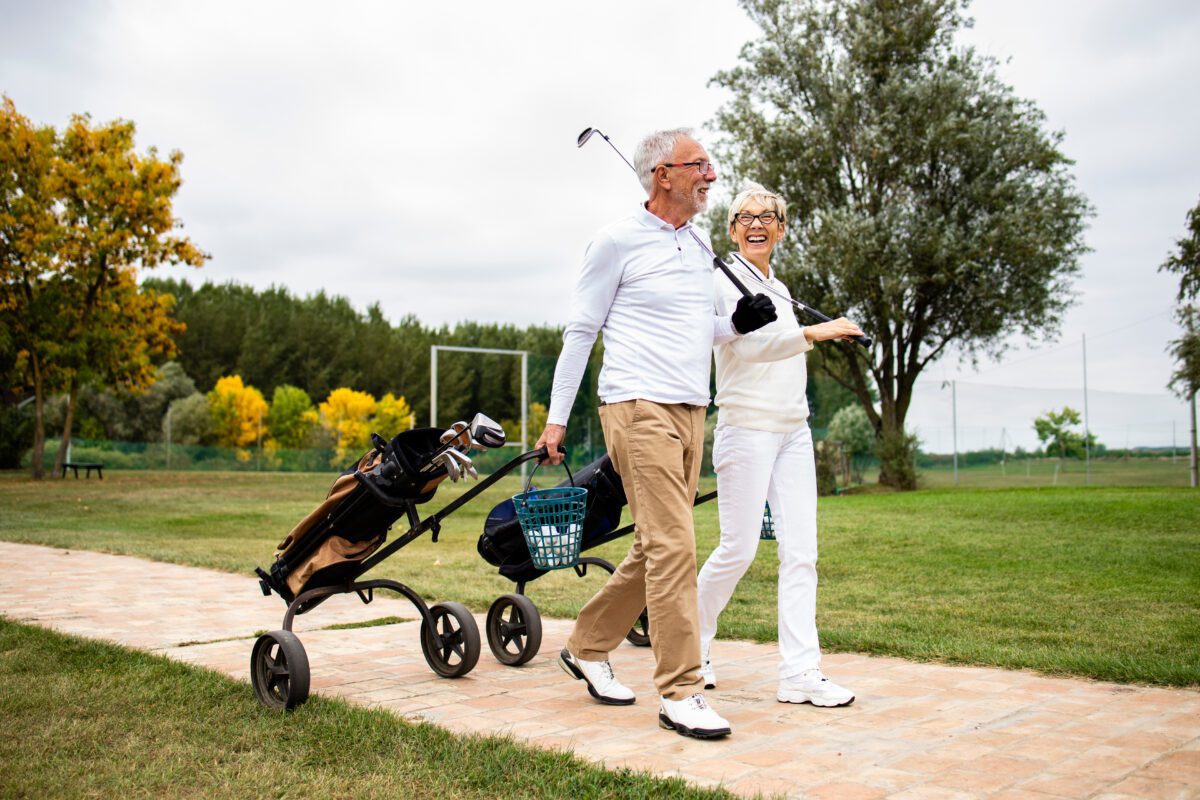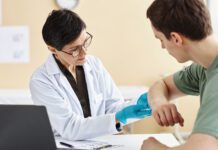Physical Wellness
Should be a main ingredient of staying healthy as we age. The key is to choose exercises that are gentle on the joints while building strength and improving balance, says Catherine Hendrix, lead wellness coordinator at Covenant Living at Inverness (CLE) in Tulsa. This can include activities such as walking, yoga, water aerobics or cycling. According to Hendrix, some exercises to use with caution or avoid altogether include overhead weight presses, which can strain the shoulders, and abdominal crunches, which can strain the neck or back. She suggests trying gentle shoulder raises and planks instead.
Low-impact, joint-friendly exercises are also recommended for the residents at Epworth Villa (EV) in Oklahoma City. These can include tai chi, chair yoga, stretching or even line dancing for seniors who enjoy cutting a rug.
Mary Alvarez, Epworth Villa’s wellness coordinator, suggests that resistance bands and light weight training are great for maintaining muscle mass. Joint concerns and balance issues in older adults can pose potential hazards during exercises, such as running or fast-paced aerobics.
It is essential to consult a healthcare professional before starting a new exercise routine, especially as we age. EV also holds regular meetings with a physical therapist, where older adults can receive tips or ask questions about issues they may be experiencing.
Sometimes the best way to keep the body physically healthy is to work regular activity into our daily lives. Hendrix suggests things such as taking short walks, using canned goods as light weights, balancing on one foot while brushing teeth, and stretching during commercials or while waiting for the microwave.
“The most important thing is to keep moving,” says Hendrix. “When we stop moving, we start to lose strength and balance — but even small steps can help you stay independent and feel your best.”

Nutrition
The flip side of the wellness coin is nutrition. It is important to remember that nutritional needs can change as we age.
Nicole Bulman, clinical nutrition manager at CLE, recommends focusing on incorporating enough protein into the diet through items such as lean meats, beans and dairy products. Epworth Villa’s culinary team has made a “fresh food pledge” and serves a large percentage of whole, minimally processed foods.
Getting enough fluids each day to support good digestion and nutrient absorption, as well as to prevent illnesses, is a top priority, according to Bulman. However, this doesn’t have to be limited to just water; herbal teas and broths throughout the day can also contribute to the overall fluid intake.
Another important consideration for people of a certain age is maintaining bone density.
“To support bone density, focus on getting enough calcium and vitamin D — they work together to keep bones strong,” says Bulman. Calcium can be found in dairy products, as well as in leafy greens like kale or bok choy, and foods such as prunes and canned salmon with bones. The best source of vitamin D is the sun, but consult a doctor about taking a supplement if you have limited outdoor time.

Physical wellness isn’t the only aspect of overall wellness as we age. Keeping our minds active and vital relationships in place can be just as important. And, as many people learned during the pandemic years, technology can be a key component to staying in touch with loved ones.
“We’ve seen remarkable success with residents who embrace digital tools to stay in touch with loved ones,” says AARP Oklahoma state director Sean Voskuhl. “Whether it’s video calls, social media or messaging apps, these technologies have helped bridge the distance and brought a real sense of connection and joy into their lives.”
But many older adults face a learning curve when it comes to today’s technology. AARP offers a Senior Planet Tech Helpline, where seniors can receive one-on-one assistance with technology. Senior Planet also provides a curriculum of classes that teach competence and confidence in using technology for communication, entertainment and productivity. Suppose seniors need a bit more comprehensive help to get started. In that case, AARP also offers the Digital Skills Ready @ 50+ video tutorials on various topics, including depositing checks via smartphone, joining Zoom calls, using social media safely and recognizing online scams.
At senior living communities, senior adults can take advantage of onsite classes to learn new technology skills. At EV, the staff have observed residents benefit from the use of technology in various ways, including video chatting with grandchildren, virtually attending book discussion groups and sharing digital photo albums. CLE offers peer-to-peer support through a resident-led tech group as well as one-on-one sessions with IT staff twice per month.
“Whether you’re just getting started or want to build on what you know, there’s always someone here to help,” says Sharon Goforth, life enrichment director at CLE. “Everyone learns at their own pace — and that’s perfectly okay.”
Technology is an excellent way to stay in touch, but nothing truly replaces actual human-to-human interaction.
“Studies consistently show that strong social connections can lead to better mental and physical health,” says Voskuhl. “Engaging with others not only keeps your mind active, but also fosters a sense of belonging that can greatly enhance your overall quality of life.”
One of the most meaningful ways CLE encourages social engagement at every level of care is through resident-led clubs. Goforth shares how the community supplies the space, supplies and other necessary resources to facilitate the club, but it is the interaction that makes them worthwhile.
Kelley Jones, director of independent living at EV, says that “because residents live near peers with shared interests, a sense of belonging builds naturally.”
Residents in both communities can stay socially connected through various clubs, exercising together, sharing meals and enjoying new group hobbies.
These opportunities are significant because the risks of losing social connections as we age can be high.
“Social isolation has been linked to a 26% higher risk of early death — a danger comparable to smoking, obesity and physical inactivity,” says Voskuhl. “Beyond the health risks, being disconnected from others often means missing out on vital community resources and support systems that promote well-being.”

Mental & Emotional Resilience
Many people assume that as we age, we gain wisdom and a higher perspective on life. Mental and emotional resilience may come naturally with age, but there are situations when, regardless of one’s experience, their mental state may be tested. Both CLE and EV address this vital aspect of wellbeing.
“At Inverness, we believe that emotional and spiritual well-being are just as important as physical health,” says Goforth. “That’s why we make it a top priority to support the whole person: mind, body, and spirit.”
There are two chaplains dedicated to the spiritual needs and mental health of residents. They offer worship services, Bible and other book discussions, as well as grief and caregiver support groups. According to Goforth, whether residents are seeking quiet reflection, meaningful conversation or a sense of community, the chaplains are there to support them with compassion and care.
Using a framework that offers residents someone to talk to, staff at EV address the mental health needs of residents through grief groups, wellness talks with healthcare providers, and appointments with an on-site social worker who can make referrals for mental healthcare. They have found that routine, purpose and social connection are paramount as they celebrate small wins, foster friendships and offer volunteer opportunities to shift the focus off personal challenges.
A fun way to keep the mind sharp at any age is to learn new skills or further develop old ones. The range of options for this is limited only by one’s imagination.
“Research shows that learning new skills helps keep the brain active and adaptable, a process known as neuroplasticity,” says Goforth. Inverness offers weekly brain games that challenge memory, logic and problem-solving; no-fail art projects that encourage creativity without pressure; dance lessons that combine movement, rhythm and fun; and ongoing educational programs featuring guest speakers, classes and discussion groups, among other activities.
Lifelong learning is part of the culture at EV as well, where a variety of classes are offered, including art, writing, book discussions, woodworking instruction, floral arranging and more, to stimulate the mind. Residents also have the opportunity to lead their own groups and help one another in the effort to stay sharp and learn new things.
Goforth adds: “Whether you’re trying something brand new or revisiting a favorite hobby, there’s always an opportunity to grow, learn and enjoy the process.”
























Social Engagement